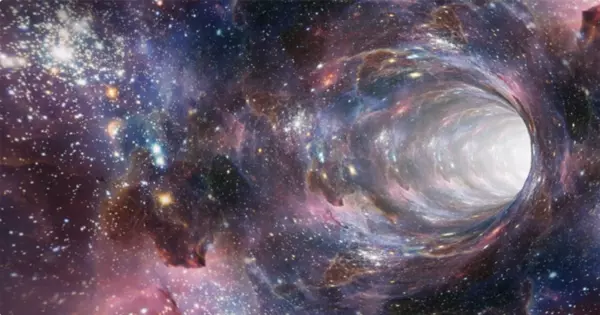Gravitational waves are a chaotic sea of ripples in space-time that make up our cosmos. Astronomers have been hoping to witness waves from circling pairs of supermassive black holes in faraway galaxies for decades, and now they’re one step closer thanks to NASA’s Fermi Gamma-ray Space Telescope.
Fermi detects the highest-energy kind of light, gamma rays. Over a decade of Fermi data from pulsars, the rapidly revolving cores of stars that erupted as supernovae, was investigated by an international team of scientists. They were looking for small differences in the arrival timing of gamma rays from these pulsars, which could have been created by light travelling through gravitational waves on its route to Earth. However, they were unable to locate any.
“We kind of surprised ourselves when we discovered Fermi could help us hunt for long gravitational waves,”
Matthew Kerr
While no waves were observed, the research indicates that these waves may be within Fermi’s reach with more observations.
“We were a little surprised when we realized Fermi could help us search for long gravitational waves,” said Matthew Kerr, a research physicist at the US Naval Research Laboratory in Washington.”It’s new to the game; comparable searches have been conducted by radio scientists for years. Fermi and gamma rays, on the other hand, have some unique properties that, when combined, give them a highly strong instrument in this inquiry. “

Kerr and Aditya Parthasarathy, a researcher at the Max Planck Institute for Radio Astronomy in Bonn, Germany, co-led the study, which was published online on April 7 in the journal Science.
Gravitational waves travel at the speed of light when large objects accelerate. The ground-based Laser Interferometer Gravity Wave Observatory, which detected gravitational waves for the first time in 2015, can detect ripples that are tens to hundreds of kilometers long from crest to crest and pass by Earth in fractions of a second. The Laser Interferometer Space Antenna, which will be launched into space in the near future, will detect waves that are millions to billions of kilometers long.
Kerr and his team are looking for light-year-long waves that travel billions of kilometers and take years to reach Earth. The gravitational wave background, a random sea of waves generated in part by pairs of supermassive black holes in the nuclei of merging galaxies across the universe, is responsible for these extended ripples.
Pulsar timing arrays, which are galaxy-sized detectors, are needed to find them. These arrays rely on millisecond pulsars, which spin as quickly as blender blades. Millisecond pulsars sweep radio and gamma-ray beams past our line of sight, appearing to pulse with remarkable regularity—like cosmic clocks.
Long gravitational waves delay or advance the arrival time of light by billionths of a second when they pass between one of these pulsars and Earth. Scientists believe that by scanning for a precise pattern of pulse changes among pulsars in an array, they will be able to detect gravity waves passing by.
Pulsar timing arrays have been used by radio astronomers for decades, and their measurements are the most sensitive to gravitational waves. However, interstellar impacts make radio data analysis more difficult. The universe is littered with wayward electrons. Their combined actions distort the path of radio waves across light-years. The arrival times of pulses at different frequencies change as a result of this. These problems are not present with gamma rays, which serve as a supplemental probe as well as an independent validation of the radio results.”When
it comes to potentially detecting the gravitational wave background, the Fermi results are already 30% as excellent as the radio pulsar timing arrays.” “After another five years of pulsar data collecting and processing, it’ll be just as capable, with the extra benefit of not having to worry about all those stray electrons.”
Both radio and gamma-ray astronomers aim to reach sensitivities that will allow them to detect gravitational waves from circling pairs of giant black holes within the next decade.”
This measurement is made possible by Fermi’s remarkable capacity to precisely time the arrival of gamma rays and its large field of view, said Judith Racusin, Fermi deputy project scientist at NASA’s Goddard Space Flight Center in Greenbelt, Maryland. “The mission has continuously astonished us with new knowledge about the gamma-ray sky since its launch. We’re all waiting for the next incredible discovery. ” The source
of the story:
NASA/Goddard Space Flight Center provided the materials. Jeanette Kazmierczak wrote the original.





